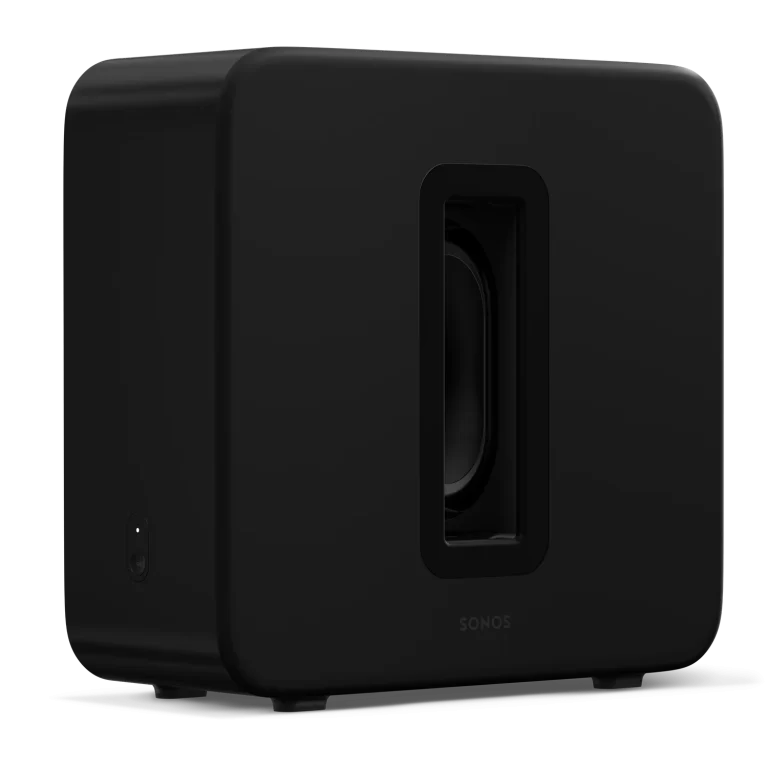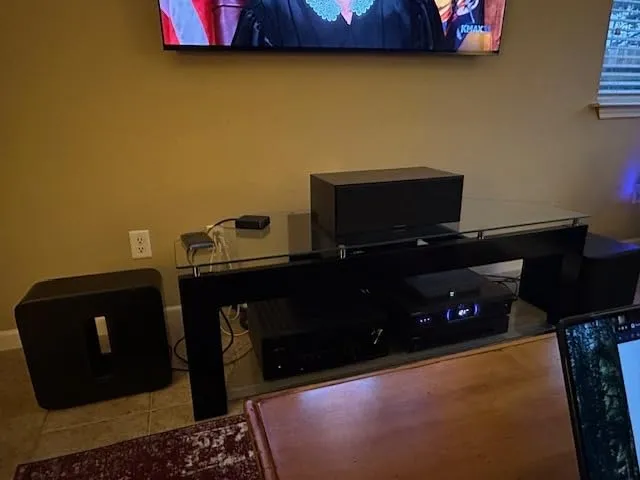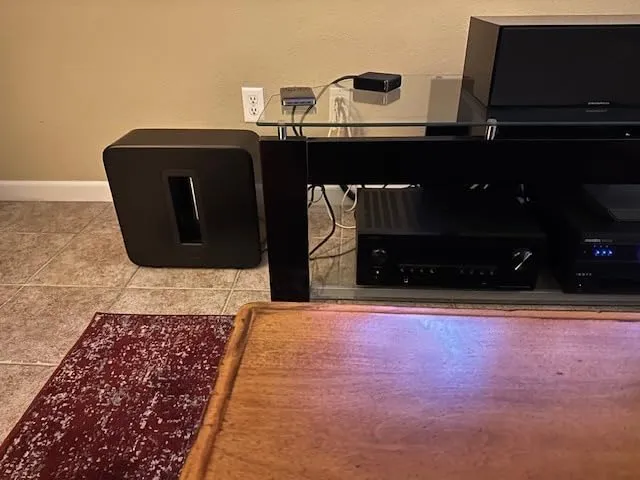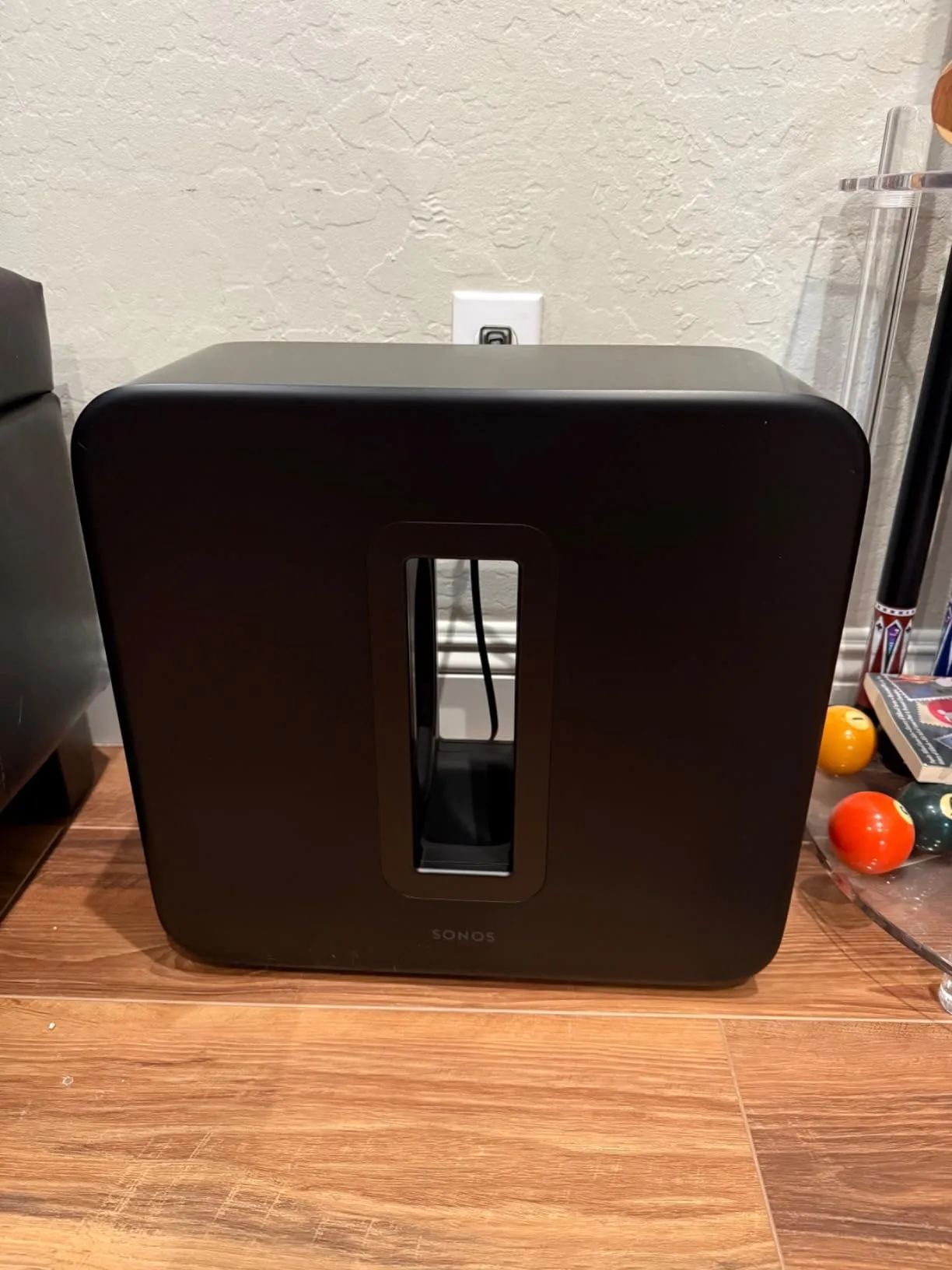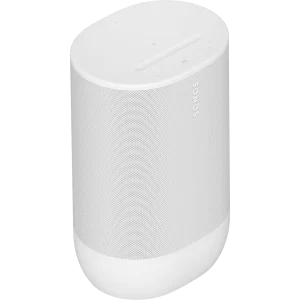Most reviewers praise the Sub 4’s ability to deliver deep, room‑shaking bass that transforms movies, music, and games into immersive experiences. Many report feeling explosions and rumbling effects “like you are in a theater,” even at moderate volume levels. The wireless design ensures the bass remains consistent, filling rooms without cables getting in the way.
The plug‑and‑play setup via the Sonos app earns high marks, with users describing the process as “easy to set up and get connected” . Controls for adjusting bass levels are intuitive, though a handful of users experienced occasional syncing delays or needed to retry pairing steps. Once configured, the Sub 4 integrates flawlessly with Sonos soundbars and surround speakers.
Reviewers love the Sub 4’s sleek, compact form factor, noting it tucks neatly behind furniture or even under a bed without sacrificing audio performance. The matte finish matches other Gen 4 Sonos products and complements modern décor. Its wireless connectivity to the Sonos ecosystem is celebrated as a standout feature, rivaling—and often surpassing—competing subwoofers in both reliability and aesthetic appeal.
✅ What Are the Advantages of This Product?
- Powerful Deep Bass: The Sub 4 delivers thumping, theater‑quality bass that many users say “shakes the house” and “fills the room” with low frequencies. It reproduces explosions, musical beats, and game effects with clarity and punch, giving home entertainment a professional edge. One reviewer noted, “Adding a second sub was a big improvement for watching movies” , underscoring how it elevates audio immersion.
- Wireless Convenience & Seamless Integration: Users appreciate the Sub 4’s wireless setup, which eliminates cable clutter and pairs instantly via the Sonos app. The device connects reliably to Sonos soundbars (Arc, Arc Ultra) and Era speakers without signal drops. As one Amazon customer put it, “This subwoofer slaps hard for being so small and compact! And it’s easy to set up and get connected! A+” .
- Compact & Sleek Design: The Sub 4’s modern matte finish and minimalist shape make it blend into any living room décor. It fits under furniture or in corners without drawing attention, yet hides power and performance in a small footprint. Multiple reviewers mention tucking it discreetly behind couches or under beds, praising how its design enhances rather than intrudes on their home theater setup.
- Intuitive App Controls: The Sonos app lets users fine‑tune bass levels, adjust phase, and update firmware with a few taps. Reviewers highlight the ability to dial in precise bass presence, noting that tweaks can tailor the Sub 4’s output to different room sizes and listening preferences. This level of control contributes to a more personalized and consistent audio experience.
❌ What Are the Disadvantages of This Product?
- Premium Price Point: At around $800 MSRP, the Sub 4 sits at the high end of consumer subwoofers. Some users feel the cost is steep, with one reviewer commenting it “should be like a $500, not $800” . While most agree the performance justifies the price, budget‑minded buyers may hesitate.
- Occasional Setup & Sync Issues: A minority of users report connectivity glitches or difficulty syncing with the soundbar, requiring multiple pairing attempts. One noted that “it won’t sync with bar… and does not have much information in manual” , highlighting the need for clearer setup guidance.
- Weight & Portability: While compact in design, the Sub 4 is heavy, limiting portability. A reviewer called it “super heavy” despite its small size . Moving it for optimal placement can be cumbersome, especially for those who frequently rearrange their entertainment setup.
🔄 How Has This Product Improved?
Owners upgrading from the Gen 3 Sub report smoother wireless performance—especially on Wi‑Fi 6/7 networks—and a matte finish that better matches other Sonos products. One user observed that “connectivity issues I had with the previous Gen 3 sub and WiFi 7 are gone,” making the Gen 4 a notable reliability upgrade .
⚖️ How Does This Product Compare to Other Options?
Compared to the Sony SA‑SW5 subwoofer, the Sonos Sub 4 offers deeper bass and seamless Sonos integration, with one reviewer declaring it “blows away the Sony” in both connection stability and cinematic impact . While some high‑end subs may dig ever deeper, few rival its combination of wireless convenience, design, and user‑friendly controls.
🎯 Is This Product Right for You?
The Sub 4 is ideal for home theater enthusiasts, music lovers, and gamers who already own Sonos products. If you value cinematic bass, wireless setup, and sleek design, it’s a perfect match. Budget buyers or those seeking extreme low‑frequency extension may consider more traditional wired subwoofers, but they’ll sacrifice the ease and polish Sonos delivers.
⚠️ What Are the Most Common Problems?
- Sync Dropouts: Rare pairing failures or temporary audio dropouts during initial setup.
- Heavy to Move: The dense enclosure hinders quick repositioning.
- Price Sensitivity: Some users feel the premium tag is hard to justify without dedicated home theater usage.
🔧 How to Fix Common Issues?
- Update Firmware: Use the Sonos app to install the latest system updates before setup.
- Optimize Placement: Position the Sub 4 near your router or on a solid surface for best wireless reception.
- Follow App Prompts: The Sonos trueplay tuning and bass calibration can resolve many sync and level issues quickly.
💡 How Can You Get the Best Experience with This Product?
- Trueplay Tuning: Run the Sonos app’s Trueplay calibration in your listening room to balance bass with room acoustics.
- Bass Level Adjustments: Start at –3 dB and incrementally raise the level to avoid overpowering mids and highs.
- Pair Multiple Subs: For large rooms, connect two Sub 4 units to achieve more even bass distribution.
🤔 Is This Product Worth It?
For Sonos ecosystem users seeking a wireless, high‑performance subwoofer, the Sub 4 is an excellent investment. Its combination of deep bass, app‑driven controls, and clean design earns strong recommendations despite its premium price. Unless you require ultra‑low extension below 20 Hz, most will find its cinematic impact and usability more than justify the cost.
